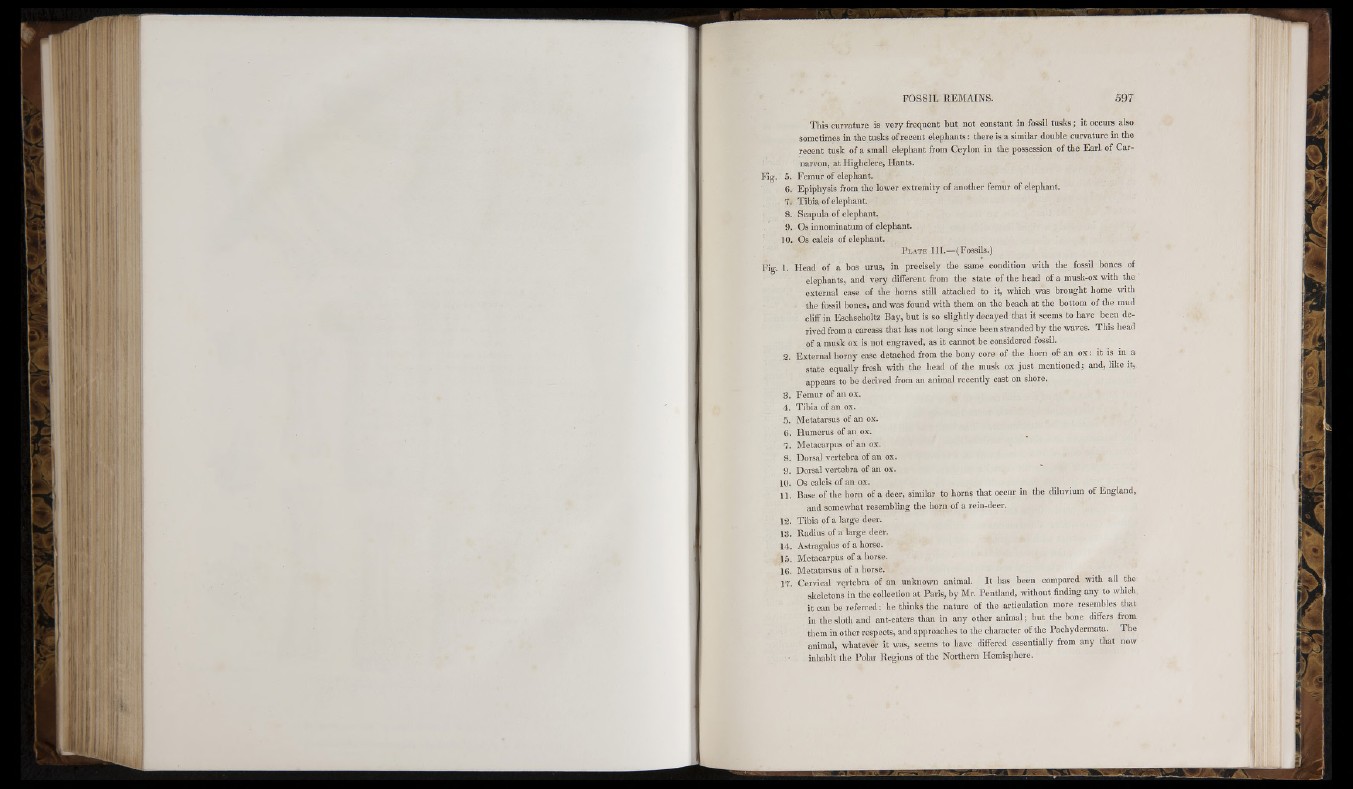
T h is curvature is v e ry freq u en t b u t n o t constant in fossil tu s k s ; i t occurs also
sometimes in the tusks o f re cen t e le p h a n ts : th ere is a similar double curvature in the
re c en t tusk o f a small elephant from Ceylon in th e possession of th e Earl, o f C a rnarvon,
a t Highcle re, Hants.
Fem u r of elephant.
Epiphysis from th e lower extremity of an o th e r femur of elephant.
T ib ia of elephant.
Scapula of elephant.
Os innominatum of elephant.
Os calcis o f elephant.
P l a t e I I I .— (Fossils.)
H e ad of a bos urus, in precisely th e same condition w ith the fossil bones of
e lephants, and very different from th e s tate of th e head of a musk-ox with the
e x te rn a l case o f th e horns still attached to it, which was b ro u g h t home with
th e fossil bones, and was found with th em on th e beach a t th e bottom of the mud
c liffin Eschscholtz Bay, b u t is so slig h tly decayed th a t it seems to have been d e rived
from a carcass th a t has n o t long since been stranded b y th e waves. T h is head
o f a musk ox is n o t engraved, as it cannot be considered fossil.
E x te rn a l horny case detached from the bony core of th e h o rn o f an o x : it is in a
s tate equa lly fresh with the Lead o f the musk ox ju s t m entioned; and, Hke it,
appears to be derived from an animal recently cast on shore.
F em u r o f an ox.
T ib ia o f an ox.
Metata rsus of an ox.
Hum eru s of an ox.
Metacarpus of an ox.
Dorsal v ertebra of an ox.
Dorsal v ertebra o f an ox.
Os calcis of an ox.
Base o f th e horn of a deer, similar to horns that occur in the diluvium of E n g lan d ,
and somewhat resembUng the horn o f a rein-deer.
T ib ia of a large deer.
Radius of a large deer.
Astragalus of a horse.
Metac arpus of a horse.
Metata rsus of a horse.
Cervical ve rte b ra o t an unknown animal. I t has been compared n i th all the
skeletons in the collection a t Paris, by Mr, Pentlaiid, without finding an y to which
it can b e re fe rre d ; he thinks th e n atu re o f th e articulation more resembles that
in th e slotli and ant-eaters th an in a n y other a n im a l; b u t th e bone differs trom
them in other respects, and approaches to th e character o f the Pachydermata. T h e
animal, whatever it was, seems to have differed essentially from an y th a t now
inhabit the Polar Regions of the N o rthe rn Hemisphere.